Green architecture – The Crystal, London, UK
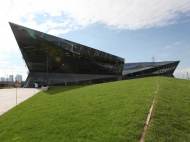 The Crystal – a Sustainable Cities Initiative by Siemens, has recently been opened in London. Located at the Royal Docks area, the structure homes Siemens’ global Center of Competence Cities – a team of multi-disciplinary urban experts, who aim to encourage the growth of sustainable cities through partnerships, research and expert collaboration on solutions as well as exhibition area of technologies of the future.
The Crystal – a Sustainable Cities Initiative by Siemens, has recently been opened in London. Located at the Royal Docks area, the structure homes Siemens’ global Center of Competence Cities – a team of multi-disciplinary urban experts, who aim to encourage the growth of sustainable cities through partnerships, research and expert collaboration on solutions as well as exhibition area of technologies of the future.
Designed by Wilkinson Eyre, the uniquely shaped, glass-clad structure has more than 6,300 square meters (80,729 square feet) of space. It will serve as a conference centre, urban dialogue platform and technology and innovation centre. Inside the Crystal is the world’s largest exhibition on the future of cities covering 2,000 square meters (21,527 square feet). It also features charging stations for electric cars and will be part of the Source London charging network.
The interactive exhibition guides visitors through the urban infrastructure of the future, focusing on possibilities for sustainable mobility, building technologies, power and water supplies, and healthcare. It also hosts a conference centre with 270 seat auditorium, office space, electric vehicle recharging points and a cafe. The Crystal is designed to achieve top scores on the BREEAM and LEED certification and here are some of its notable sustainable features.
The Crystal has a building management system which allows control from one or many locations. Total integration means the building can be managed by one man or remotely from anywhere in the world. The building can be controlled from the smallest light fitting for comfort or to match the requirements of the National Grid when power consumption is critical.
Features include intelligent analytics (CCTV), advanced fire sensors, occupancy detection, and comfort sensors. During off peak time, the smart node technology in the building stores electricity in a battery and uses it during peak times. Total room control enables the space to be adjusted for maximum comfort (heat, light, ventilation) plus minimum energy consumption.
Natural daylight is utilized wherever possible and features include constant light control with automatic adjustment of each and every lamp and LED for brightness and color, depending on the time of day and occupancy detection. For the majority of spaces, artificial light during the day is not required and when it is, there is no waste. Glazing is placed strategically for maximum daylight and minimum unwanted solar gain.
The building operates with a low energy, intelligent mixed mode ventilation strategy. Where seasonally possible, it will be naturally ventilated in both the office and exhibition crystals, using motorized opening vents in the facades and roofs. The building management system maximizes free cooling, avoiding the use of air conditioning where possible. Resources in the Crystal are monitored so extensively that every kW of electricity and liter of water can be measured in order to ensure that efficiencies are maintained.
The aid conditioning cooling is primarily taken from the surrounds via the ground source heat pump. During hot days, it takes the heat from the building and puts it back into the ground, thus keeping the building cool. During cold days, it takes heat from the ground and heats the building.
External glazing and insulated roofing also keeps heat in during winter and heat out during summer. The glass is angled away from the sun in some areas to shade the building where sun’s heat is not wanted, and towards the sun in other areas where it is beneficial for the heating of the building.
A significant part of the electrical power produced in this all electric building Is generated by photovoltaic roof panels, which collect the sun’s energy producing electricity converted with Siemens inverter to match the building’s needs. An intelligent Energy Centre manages heat recovery, and sun’s energy is also used to heat the water used in the restaurants and restrooms with usage of solar thermal panels.
Rainwater is harvested and treated to be potable. The building features water efficient appliances, low flow fixtures and sanitary fittings. A connection to the city’s water system kicks in during dry seasons. A black water recycling plant reuses all of the water used in the building, and that water is used to re-flush the toilets and water the landscaping around the building. Smart irrigation system detects moisture in the soil and minimizes the use of water which is combined from the recycled black water and surplus of water from the rainwater tank.
Landscaping at the Crystal is multipurpose and it serves as an ecological corridor or linear strip of vegetation. Plant and tree species have been selected to withstand more drought tolerant condition which are typical for urban environments and demand less water for their maintenance. A Community Garden provides a series of gardens to promote community involvement for cultivation and education.
Even paving and tarmac materials have been chosen to reduce street light energy use. The centre also uses a sustainable drainage system that minimizes discharge into the sewer and prevents excess runoff to the adjacent dock.

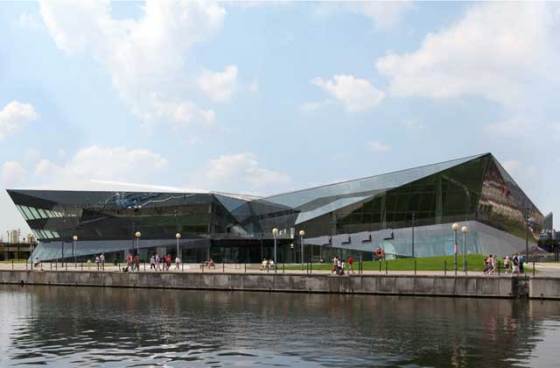
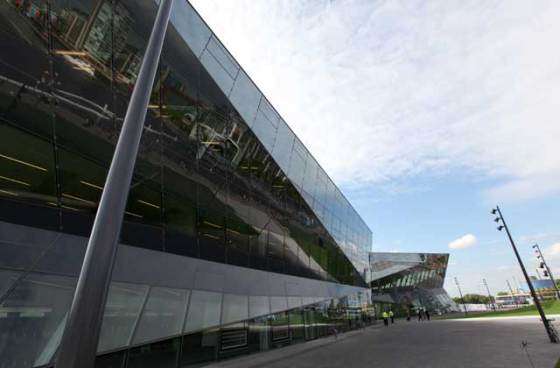
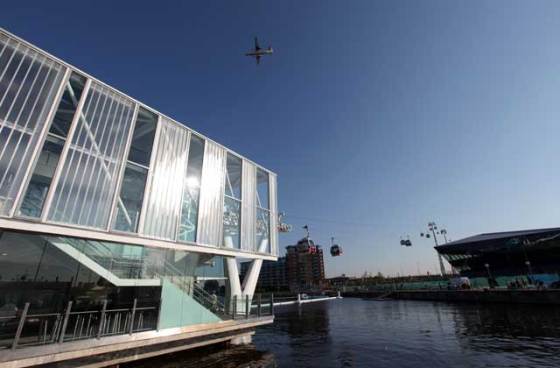
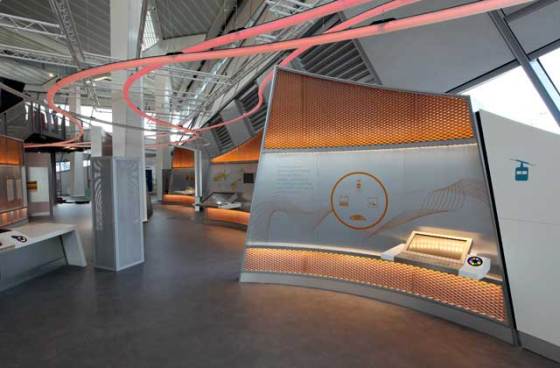
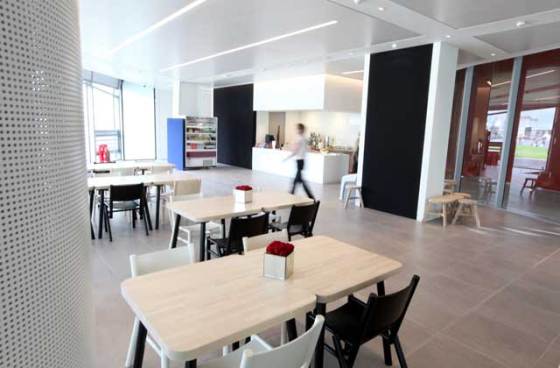








Where’s the green? All I see is steel, glass, and asphalt. What human would want to go near that place?
It actually isn’t as bad as you might have imagined it.
They could have planted more trees in its vicinity where land allows those.